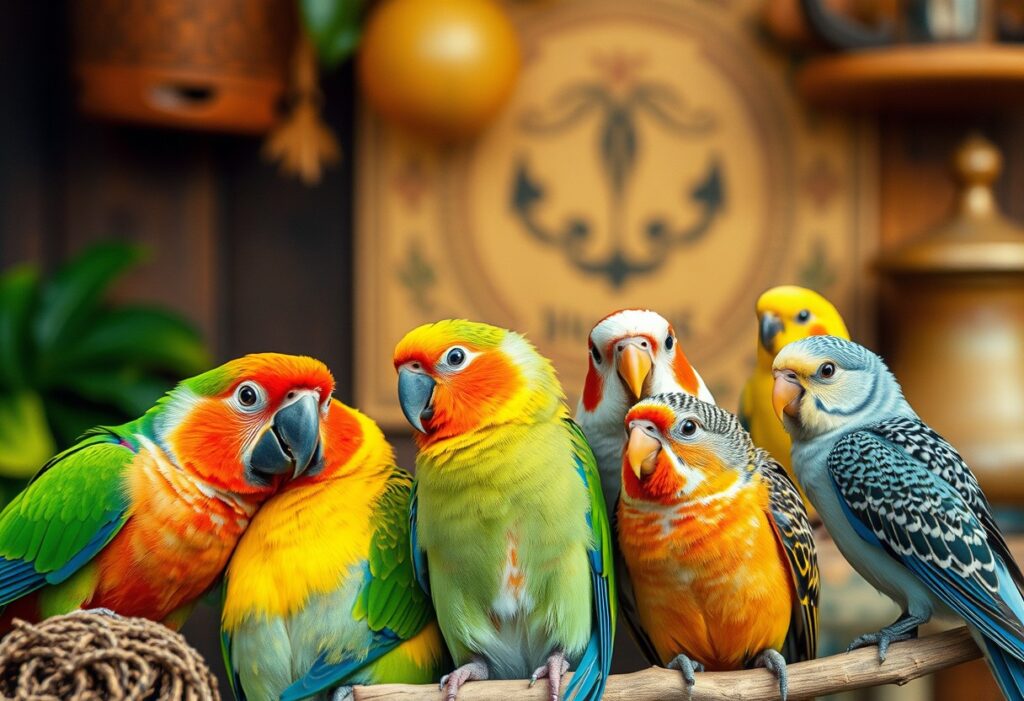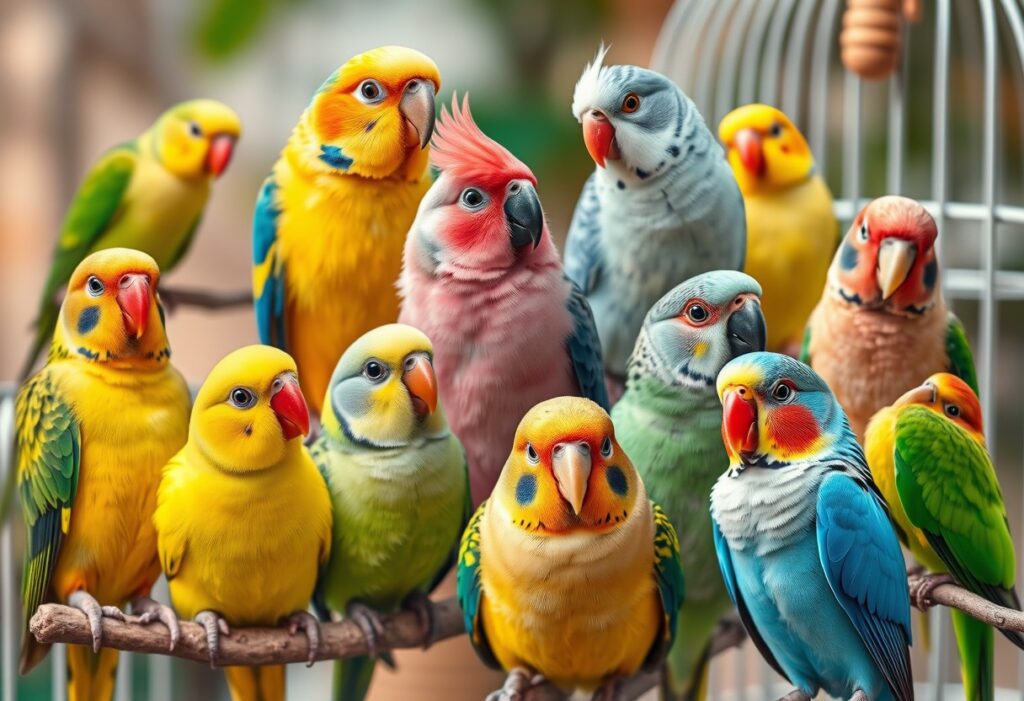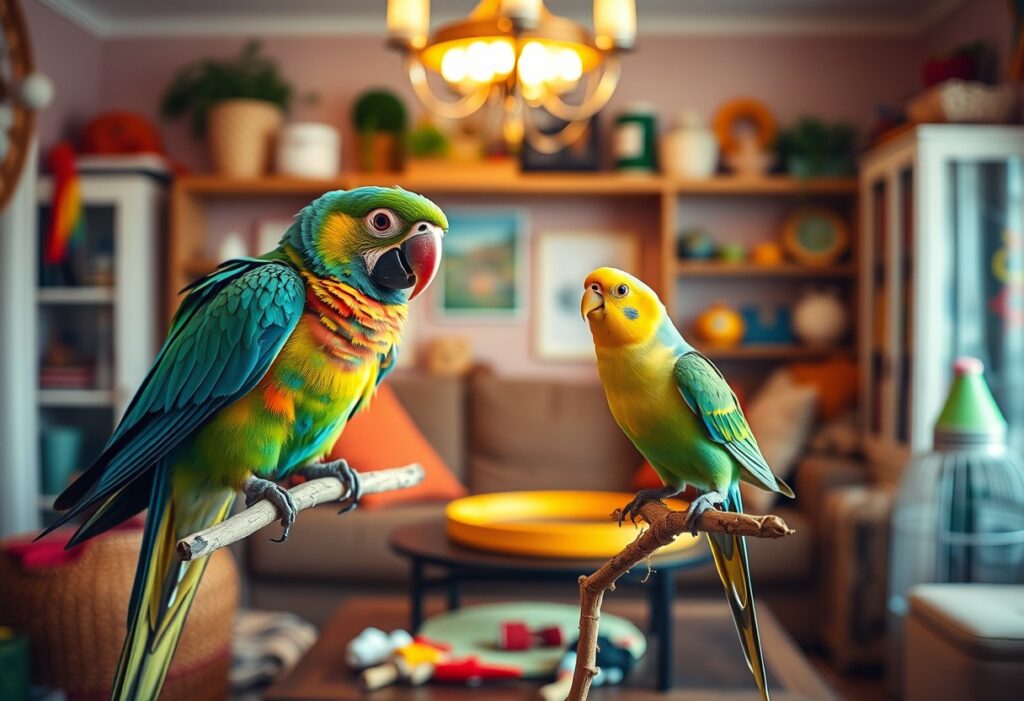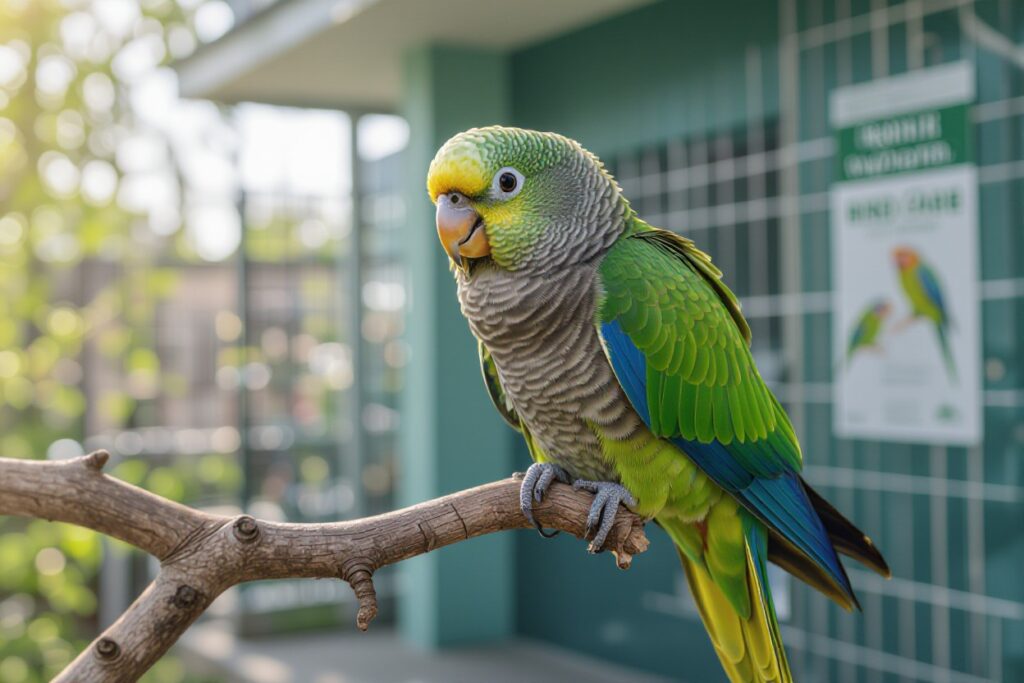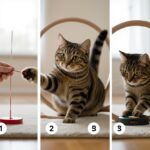It’s necessary for you to understand the historical significance and origins of the pet birds you adore. Knowing where these feathered companions come from will enhance your appreciation for their unique behaviors and characteristics. From the wild rainforests that birthed the vibrant Amazon parrots to the remarkable adaptability of budgerigars in the Australian Outback, every species has a captivating story. In this post, you will discover the fascinating journeys that brought these beloved pets into your homes and hearts, enriching your bond with them like never before.
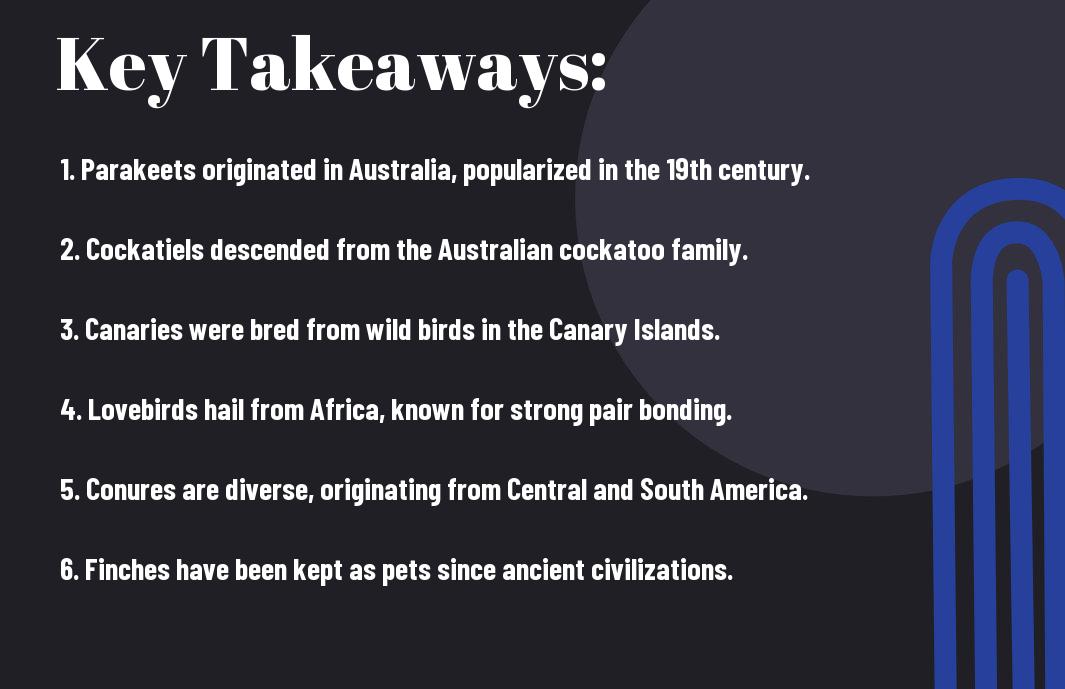
The Evolution of Pet Birds
While our fascination with birds has deep roots, the journey to domesticate these enchanting creatures has been a vital chapter in human history. Understanding the evolution of pet birds is crucial for appreciating the relationship between humans and avian species. Over thousands of years, different bird species have transitioned from wild creatures to beloved companions. This transformation showcases not only the adaptive capabilities of birds but also the changing dynamics of human-animal relationships.
Overview of Bird Domestication
Evolution has played an instrumental role in the domestication of birds, just as it has for many other animals you know. The early domestication of birds likely stemmed from their aesthetic appeal and the usefulness of their songs. Initially, wild birds were attracted to human settlements due to the availability of food and shelter, creating a symbiotic relationship. This bond has grown over centuries, paving the way for various species to evolve into distinct pet birds.
Key Historical Milestones
For the domestication of pet birds, several key historical milestones mark the evolution of these feathered companions. The earliest known instance of bird keeping dates back to ancient civilizations, such as the Egyptians and Romans, who admired birds for their beauty and vocal abilities. These civilizations began selectively breeding birds, leading to the development of various species that resemble your modern pet birds today. In the Middle Ages, for instance, people in Europe began to appreciate canaries as delightful companions and singers, promoting their cultivation and breeding.
Understanding these pivotal moments in history is crucial for recognizing the importance of selective breeding in developing certain characteristics in pet birds. As you trace the timeline of bird domestication, you will discover how the shift from wild habitats to human homes has allowed birds to adapt and refine their physical attributes, such as coloration and size. This evolution not only underscores the inherent value of these birds but also highlights the responsibility you bear as a pet owner to provide safe and nurturing environments that honor this rich history.
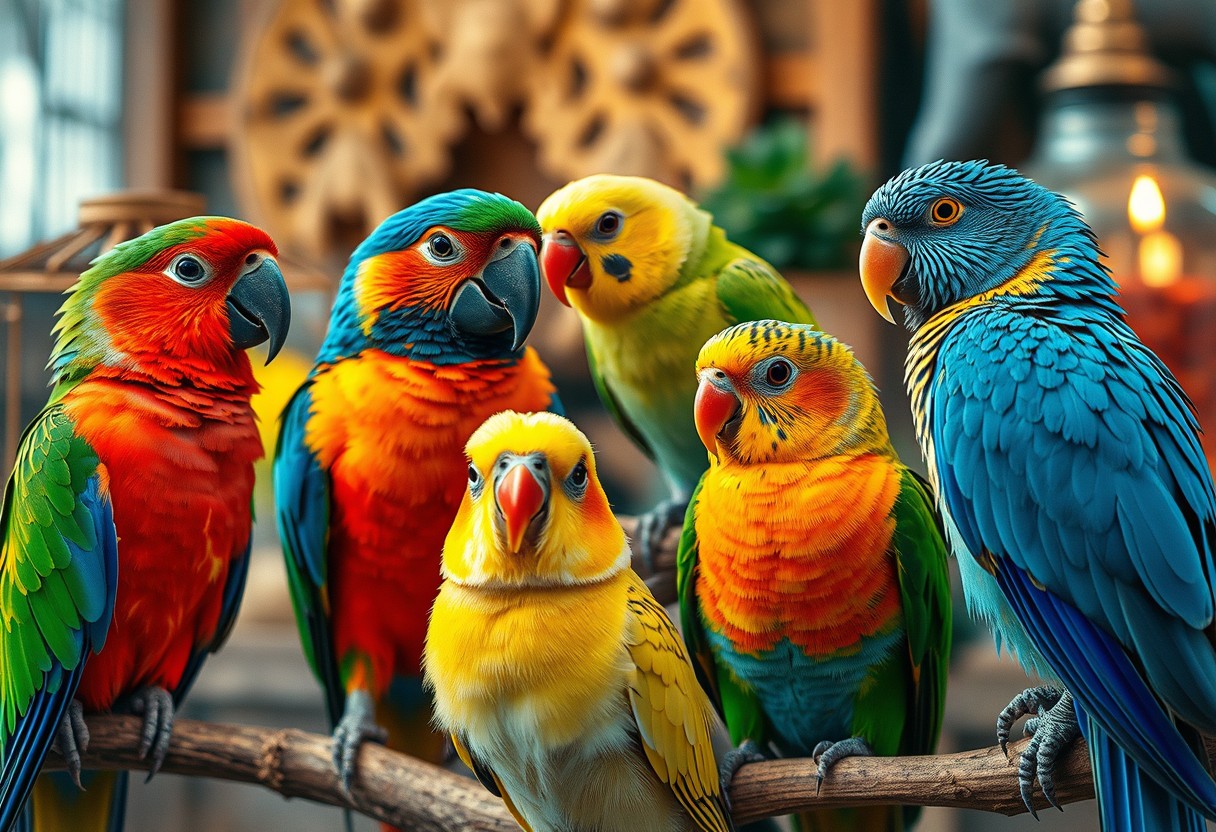
Popular Pet Bird Species
One of the most captivating aspects of the bird-keeping hobby is the variety of species that have become popular companions in our homes. Each breed comes with its unique characteristics, personality traits, and care requirements that can make your experience as a bird owner profoundly fulfilling. As you explore the world of pet birds, you’ll discover a universe brimming with cheerful chirps, vivid colors, and the joyful chaos that only avian companions can bring.
Parakeets: Charismatic Companions
To many, parakeets are synonymous with pet birds. Their vibrant feathers, playful nature, and sociable demeanor make them endearing companions. These small birds, often referred to as budgerigars or ‘budgies,’ hail from Australia and are known for their striking appearance and engaging personalities. They thrive in social settings and require your interaction to stay happy, making them excellent pets for families or individuals looking for companionship.
To care for a parakeet, you will need to provide a spacious cage, a balanced diet of seeds and fresh vegetables, and daily interaction to stimulate their mental and emotional well-being. Their charming ability to learn tricks and mimic sounds can be delightful, and if you take the time to engage with them, they can develop a strong bond with you. This can transform your living space into a lively environment filled with the sounds of chirping and laughter.
Cockatiels: The Affectionate Natives
To understand why cockatiels are such beloved pets, you must consider their affectionate and gentle nature. These birds, native to Australia, have a charming personality that often draws you in. With their striking crests and ability to whistle tunes, cockatiels are extremely adaptable and can thrive in various living situations. They require attention and companionship, often forming strong bonds with their keepers, which enriches your experience as an owner.
To properly care for a cockatiel, you will need to provide them with a large cage and plenty of toys to prevent boredom. Regular interaction is vital, as these birds enjoy spending quality time with you and can easily become attached. Their playful antics and loyalty can create a deep sense of joy in your home, making them more than just pets; they become cherished members of your family.
Parakeets are not only known for their vibrant plumage but also their intelligent and interactive nature. They thrive on social interaction and can even learn to talk, offering a personal touch that enhances your bond with them. Their chirps and chatter can fill your space with life, creating an inviting atmosphere that resonates with happiness.
African Grey Parrots: Intelligence and Affection
With their remarkable intelligence and ability to mimic human speech, African Grey parrots stand out as one of the most sought-after pet birds. Originally from the rainforests of Central Africa, these birds are highly social and demand mental stimulation. Their outstanding cognitive abilities often mean that they require more attention and care than other species, but the rewards are immense when you consider their capacity for communication and connection.
With proper care and socialization, African Grey parrots can develop deep bonds with you that are both enriching and unique. They need a stimulating environment filled with diverse toys and activities to keep their minds engaged. Their playful nature and affection towards their owners make them not just pets but also delightful companions that thrive in loving environments.
Companions like African Grey parrots require a commitment to their mental health, as they can easily become bored and develop behavioral issues without sufficient engagement. Their remarkable skills, including mimicking sounds and even speech, can create an intriguing dynamic in your home, providing endless entertainment and connection.
Budgerigars: The Original Pet Bird
African in origin, budgerigars have become recognized as the quintvital pet bird, bringing joy and companionship to millions around the globe. Known affectionately as “budgies,” these charming birds have become a staple in aviculture. They adapt well to various living situations and are friendly, making them attractive options for new bird owners.
Budgerigars can entertain you with their playful antics and mimicry of sounds, quickly endearing themselves to you. With a proper diet and a space that allows for exercise, these birds can lead long, happy lives as cherished members of your family.
Affectionately known as ‘budgies’, budgerigars offer both visual delight and a friendly disposition that helps solidify their place as a favorite among pet bird enthusiasts. Their ease of care, social nature, and vibrant colors make them an excellent choice for anyone looking to introduce a pet bird into their home.
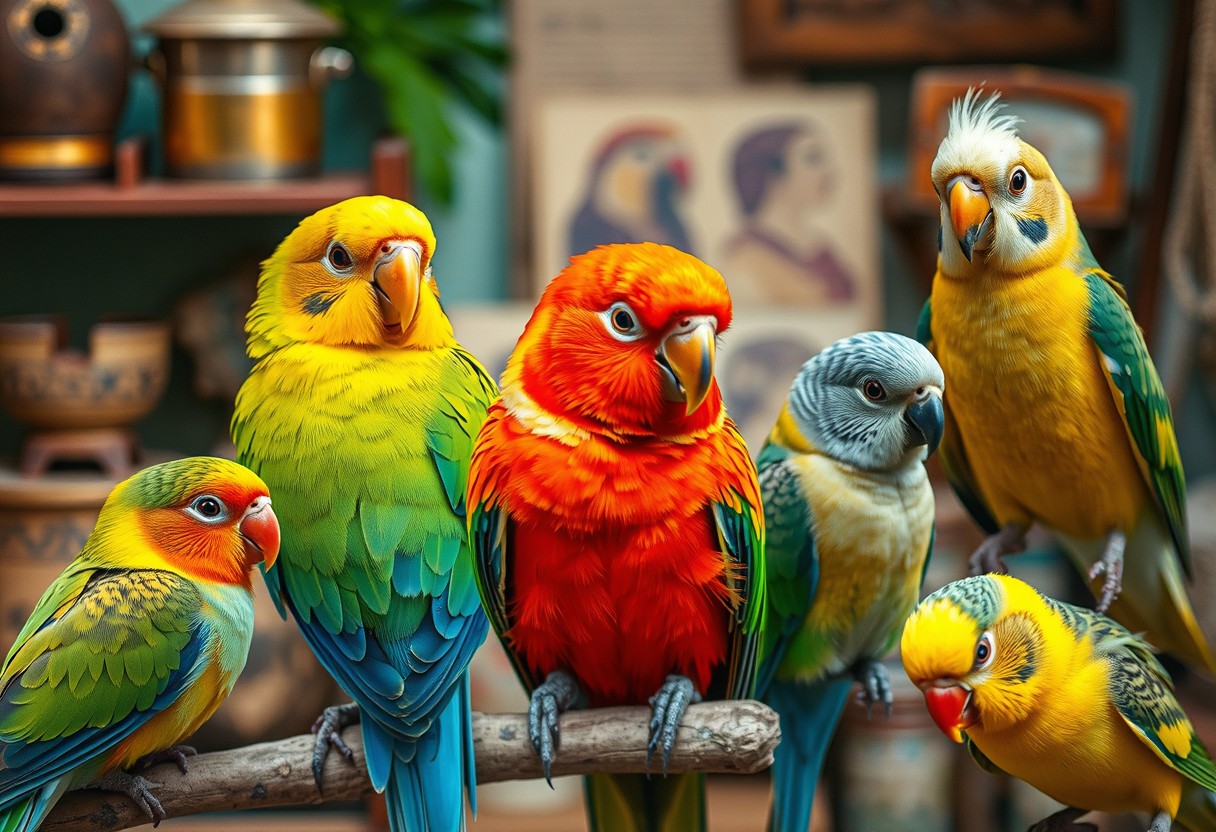
Cultural Significance of Pet Birds
For centuries, pet birds have held a notable place in various cultures around the world. Beyond their bright colors and melodic songs, these avian companions represent deeper meanings and connections to the human experience. As you explore the cultural significance of pet birds, you’ll discover how they symbolize not only beauty but also resilience.
Symbols of Freedom and Adaptability
Adaptability is one of the standout qualities that pet birds exhibit, making them emblematic of the human spirit’s quest for freedom. In many cultures, birds are associated with the ability to rise above challenges and navigate through their environment with remarkable skill. This adaptability resonates with you as a pet owner, reminding you of the importance of flexibility and growth in your own life as you create a harmonious habitat for your feathered friend.
In symbolism, birds in flight suggest liberation and the unshackling of constraints. They invite you to appreciate your own pursuit of personal liberties and encourage the exploration of new horizons. As a pet bird owner, you embody this essence, nurturing an environment where both you and your bird can thrive and adapt together.
Representation in Art and Literature
An undeniable thread runs through art and literature that showcases the presence and significance of birds. From ancient mythologies to contemporary works, they have served as powerful symbols of transformation, wisdom, and inspiration. When you research into these artistic expressions, you find yourself drawn to representations that often reflect your innermost thoughts and dreams, the freedom of flight echoing your desires for self-discovery and exploration.
Freedom is a recurring theme portrayed in various literary works, with birds often embodying hope and the aspiration to break free from societal confines. Their presence serves as a metaphor for independence and adventure, capturing your imagination as you perceive their ability to soar high above earthly limitations. Poems, paintings, and stories offer rich insights into how pet birds have been infused with cultural meanings, allowing you to connect with them on a deeper level. Through these artistic representations, you can appreciate not only the beauty of these creatures but also the values, motivations, and ambitions that they inspire within you.
To Wrap Up
Conclusively, understanding the history and origins of popular pet bird species not only deepens your appreciation for these charming companions but also helps you provide them with optimal care tailored to their unique needs. From the vibrant and social budgerigar to the intelligent and affectionate African grey parrots, each species possesses a rich narrative shaped by their environments and interactions with humans throughout the ages. By exploring their backgrounds, you equip yourself with vital knowledge that enhances your bond and communication with your feathered friend.
As you consider welcoming a pet bird into your life, remember that your decision should be informed by these historical insights and the specific requirements of each species. By recognizing their origins, behaviors, and social needs, you can create an enriching environment that reflects their natural habitats, fostering a deeper connection and greatly improving their overall well-being. Ultimately, your engaged understanding will allow you to become a responsible bird owner, ensuring your avian companion thrives in your care.
FAQ
Q: What are some of the most popular pet bird species and where do they originate from?
A: Some of the most popular pet bird species include the Budgerigar (commonly known as the Budgie), the Cockatiel, the African Grey Parrot, the Lovebird, and the Canary. The Budgerigar originates from Australia, where they thrive in the wild, while Cockatiels are native to Australia as well, often found in forests and brush lands. The African Grey Parrot hails from the rainforests of West and Central Africa, known for their intelligence and social nature. Lovebirds are indigenous to Africa, particularly in southern regions, and they are known for their strong pair bonding. Lastly, Canaries originate from the Canary Islands, Azores, and Madeira and have been domesticated for centuries, admired for their beautiful songs and vibrant colors.
Q: How have domesticated pet bird species evolved from their wild counterparts?
A: Domesticated pet bird species have evolved significantly from their wild counterparts mainly due to selective breeding. For instance, Budgerigars have been bred in various colors and patterns that do not occur naturally in the wild, resulting in visually stunning pets. Similarly, Canaries have been bred for specific traits, including singing ability and color variations, leading to different breeds such as the American Singer and the Yorkshire Canary. The gradual breeding of pet birds has also led to more docile and sociable temperaments, making them suitable companions for humans. Furthermore, domestication has often involved adaptations to diet and living conditions that cater to their life in captivity, differing from their natural environments.
Q: What factors should one consider when choosing a pet bird based on its historical background?
A: When choosing a pet bird, it’s imperative to consider several factors rooted in its historical background. First, understanding the bird’s natural habitat can inform you about their social needs and environmental preferences, which in turn influence their care. For instance, species that are naturally flocking birds, like Budgerigars and Lovebirds, will require companionship and more interaction. Second, consider the species’ size and lifespans, as some birds like African Grey Parrots can live for more than 50 years, necessitating long-term commitment. Finally, it is critical to be aware of any specific health issues that may be prevalent in certain breeds, as some birds may have been selectively bred for appearance at the expense of health. Knowledge of a bird’s history and origins can greatly enhance its care and your enjoying experience as a pet owner.
